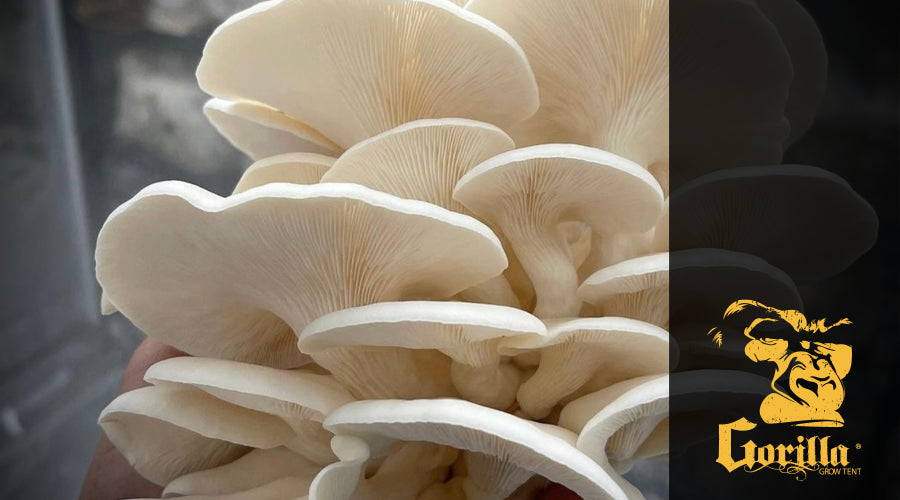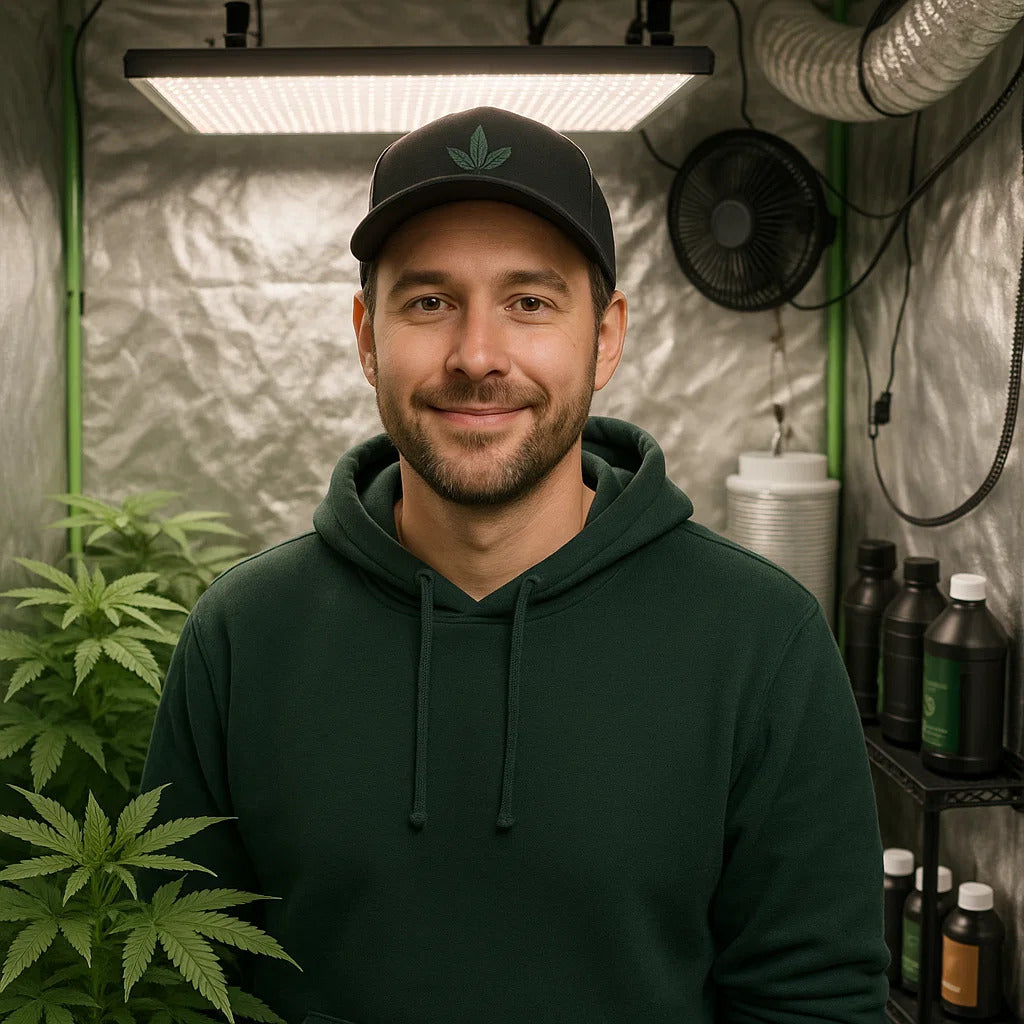
How to Build Your Own Mushroom Grow Room?
Homegrown Gourmet: How to Build Your Own Mushroom Grow Room?
Mushrooms are delicious and nutritious and offer a fascinating opportunity for indoor cultivation. With the right environment and a little patience, you can grow a variety of mushroom species right in the comfort of your home.
In this article, we will guide you through setting up your mushroom grow room, so you can embark on a rewarding journey of cultivating your fungi.
Creating the Perfect Mushroom Grow Room: A Step-by-Step Guide

Choosing the Right Space
Selecting the right space is crucial when setting up a mushroom grow room. Look for a cool, dark, and well-ventilated area in your home. A basement, spare room, or even a large closet can be transformed into an ideal environment for mushroom cultivation.
Preparing the Room
Cleanliness is essential to prevent contamination and ensure the success of your mushroom crop. Thoroughly clean the space, removing any dust, dirt, or debris. Sterilize the room by wiping surfaces with a mild bleach or disinfectant spray.
Controlling Temperature and Humidity
Maintaining the right temperature and humidity levels is vital for the growth of mushrooms. Most mushroom species thrive in a temperature range of 60-75°F (15-24°C). Invest in a thermometer and a humidifier to monitor and regulate the growth room conditions. Aim for an 80-90% humidity level during the initial stages and reduce it to 60-70% as the mushrooms mature.
Providing Sufficient Lighting
While mushrooms don't require direct sunlight for growth, they do need a source of indirect light. Install fluorescent or LED lights to provide a consistent light source for about 12 hours daily. Ensure the lights are placed sufficiently from the mushroom containers to avoid overheating.
Choosing the Right-Growing Medium
Mushrooms can be grown in various substrates, including straw, sawdust, or coffee grounds. Choose a growing medium based on the type of mushroom you want to cultivate. Prepare the substrate according to specific instructions, ensuring proper sterilization and moisture content.
Inoculating the Substrate
Once your growing medium is ready, it's time to introduce mushroom spawn or mycelium. Spawn is the "seed" for mushroom cultivation and can be purchased from reputable suppliers. Follow the instructions provided to distribute the spawn throughout the substrate evenly.
Maintaining the Growing Environment
Keep a close eye on the growing conditions inside the mushroom grow room. Check the temperature, humidity, and lighting regularly. If the humidity levels drop, remove the room with water, and adjust the temperature as necessary. Ensure proper air circulation to prevent the buildup of carbon dioxide.
Harvesting and Enjoying
Depending on the species, mushrooms will take anywhere from a few weeks to a few months to mature. Once the mushroom caps have opened and are fully developed, carefully harvest them by twisting them gently at the base. Enjoy your freshly harvested mushrooms in a variety of culinary creations.
Preventing Contamination
Contamination can be a common challenge in mushroom cultivation. To minimize the risk, practice strict hygiene protocols. Use gloves and a face mask when handling the substrate and spawn. Keep the grow room closed as much as possible to prevent the entry of airborne contaminants. Regularly sterilize tools and equipment before use.
Airflow and Ventilation
Proper airflow and ventilation are essential for maintaining a healthy environment inside the grow room. Stagnant air can promote the growth of mold or bacteria. Consider installing an exhaust or small oscillating fan to ensure adequate air circulation. This helps to disperse excess humidity and provide fresh oxygen to the growing mushrooms.
Watering and Humidity Control
While mushrooms require high humidity, overwatering can lead to problems such as mold or rot. Use a spray bottle or a misting system to water the growing substrate. Monitor the moisture levels and avoid excessive saturation. A drip tray or a layer of perlite at the bottom of the containers can help maintain adequate humidity without waterlogging the mushrooms.
Pest Management
Pests can pose a threat to your mushroom crop. Common invaders include mites, flies, and slugs. Regularly inspect the grow room for signs of pests and take immediate action if any are detected. Use organic pest control methods or consult with a professional if necessary. Preventing pests from entering the grow room is crucial, so seal any openings or gaps.
Expansion and Scaling Up
You may want to expand your operation once you have mastered mushroom cultivation basics. Add shelves, racks, or containers to scale up your grow room. Research different mushroom species and explore new growing techniques to broaden your mushroom cultivation skills.
Learning and Experimentation
Mushroom cultivation is a continuous learning process. Stay curious and explore different techniques, substrates, and mushroom varieties. Join online forums or local mushroom cultivation groups to connect with fellow enthusiasts and exchange knowledge. Experimentation will help refine your methods and discover what works best.
Record Keeping
Maintaining detailed records of your mushroom cultivation process can be beneficial for future reference and improvement. Keep track of important factors such as the date of inoculation, environmental conditions, harvest dates, and any observations or adjustments made along the way. This information can help you identify patterns, troubleshoot issues, and optimize your future growth.
Proper Disposal of Spent Substrate
After harvesting your mushrooms, you'll have a spent nutrient-depleted substrate. Disposing of it properly is essential to prevent contamination or unwanted fungal growth. Consider composting the spent substrate or using it as mulch for your garden, as it can still enrich the soil.
Continuous Care and Maintenance
Your mushroom grow cabinet requires ongoing care and maintenance even after a successful harvest. Regularly clean and sterilize the space to prevent the buildup of contaminants. Inspect your equipment and replace any worn-out or damaged components. Stay vigilant for signs of pests or diseases and address them promptly to safeguard your future crops.
Scaling Up for Commercial Production
If you aspire to turn your mushroom cultivation into a commercial venture, scaling up your operation may be necessary. Conduct thorough research on local regulations, market demand, and business strategies. Consider investing in larger-scale equipment, implementing efficient production systems, and exploring distribution channels to meet the demands of a commercial market.
Exploring Advanced Techniques
As you gain experience and confidence in mushroom cultivation, you can explore advanced techniques to diversify your growing capabilities. Some techniques worth exploring include agar culture, liquid culture, cloning, and fruiting chamber design. These methods can offer greater control and efficiency in producing high-quality mushrooms.
Setting up a mushroom grow room is an engaging and rewarding endeavor.
Embrace the process, adapt to challenges, and relish the joy of cultivating your mushrooms.

Lena Myles
I'm a mushroom enthusiast and home cook based in Oregon. I'm passionate about foraging and creating fungi-focused recipes, especially delicious, plant-based dishes using gourmet mushrooms like trumpet, shiitake, and oyster. When I’m not in the kitchen, you’ll usually find me wandering the woods in search of new wild flavors.


